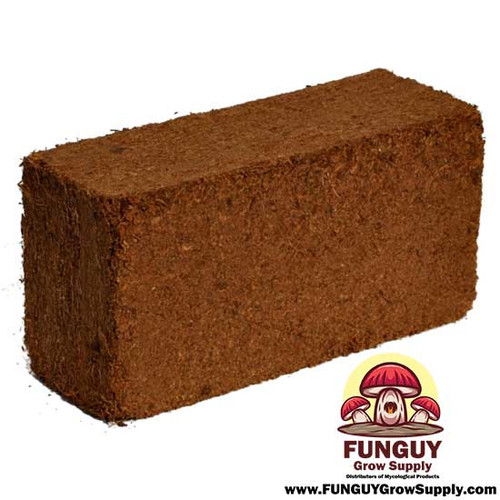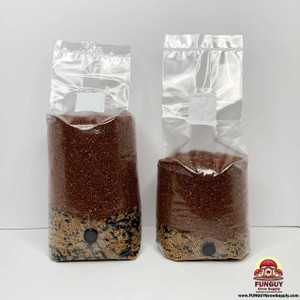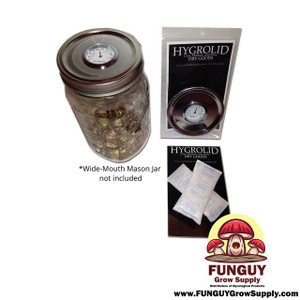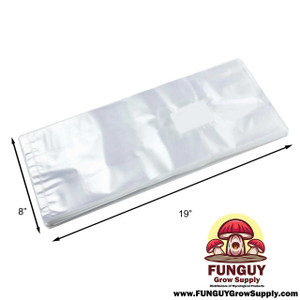Coco Coir Substrate & Mushroom Casing Layer
- SKU:
- COCO01
- UPC:
- 256878
- Bulk Pricing:
- Buy in bulk and save
- Buy 2 - 2 and get 0% off
- Buy 3 - 3 and get 20% off
- Buy 4 - 4 and get 24.9% off
- Buy 5 - 5 and get 24.9% off
- Buy 6 - 6 and get 25.9% off
- Buy 7 - 7 and get 25.9% off
- Buy 8 - 8 and get 25.9% off
- Buy 9 - 9 and get 25.9% off
- Buy 10 or above and get 29.9% off
Bulk discount rates
Below are the available bulk discount rates for each individual item when you purchase a certain amount
Coco Coir Mushroom Substrate & Casing Layer
As a popular choice for a coconut coir substrate, it's renowned for its water retention, neutral pH level, and resistance to bacterial contamination. To prepare coco coir, you'll need to soak it in hot water until it expands and then drain the excess liquid. Sterilizing the coco coir is crucial to remove any potential pathogens or pests; this can be done through pressure cooking or pasteurization. Specifically, for cubensis mushrooms, coco coir is the best casing layer due to its ability to maintain the right level of humidity and provide a hospitable environment for mycelium growth.
How to Use Coco Coir?
You'll find it's easy to use coco coir; just hydrate one brick with a gallon of water, adjust the moisture by adding 2 quarts of coarse vermiculite, and then add it as a thin layer to your fully colonized coconut substrate. This makes it the best casing layer for cubensis and an ideal choice for a magic mushroom substrate. To sterilize coco coir, you can steam or autoclave it; however, its natural resistance to contaminants often makes this step unnecessary. When learning how to prepare coco coir, remember: less is more. A 1/4 to 1/2 inch layer of coconut soil is sufficient for most applications. Coco coir mushroom substrate promotes optimal gas exchange and excellent moisture retention—key factors in successful mushroom cultivation.
Prepare to Grow Mushrooms on Coco Coir Substrate
In preparing the perfect substrate recipe for your fungi, you'll start by hydrating the brick and adjusting its moisture content to field capacity. This is an essential step in the process of preparing coco coir for mushroom growth. Next, consider pasteurizing coco coir to further reduce bacteria; steam pasteurization or a boiling water bath at 180 degrees for 1-2 hours are effective methods. Then, squeeze out excess water and let it dry before using it as your magic mushroom substrate.
When learning how to use coco coir, remember that only a thin layer should be added once pins begin to form on fully colonized monotubs or trays. Use just enough layer (approximately between a quarter and half an inch) over the substrate surface. By understanding how to make coco coir into an ideal substrate additive, you're set up for successful cultivation with this sustainable material.
Coco Coir as a Mushroom Bulk Substrate and Casing Layer
When cultivating those magic mushrooms, it's vital to understand the role this coconut fiber substrate plays both as a foundation for growth and a protective cover. Coco coir bulk serves as an excellent coconut fiber substrate, providing the mushroom core with optimum moisture and nutrient retention. As you learn how to use coconut coir, you'll find that its structure allows for ideal gas exchange which is crucial for growth. Furthermore, it acts as a natural shield when used as a casing layer in monotubs or trays. The coco block substrate is not only efficient but also eco-friendly, stemming from renewable coconut husk substrate. Just remember to fully colonize before adding this protective layer—mushrooms will thank you later!
Best Practices for Storing and Maintaining Coco Coir
Proper storage and maintenance are crucial for preserving the quality of your coconut fiber medium. The coco coir mushroom substrate & casing layer, often sold in bulk coco coir, is particularly sensitive to improper storage conditions. Hence, it's essential to understand how to use a coco coir brick effectively.
- For bulk coco coir or coconut coir bulk:
- Store in cool, dry locations.
- Utilize food-grade, air-tight containers to avoid moisture absorption.
- When figuring out how to use a coco coir brick or coco husk substrate:
- Hydrate only as much as you need at one time.
- Rehydrate dried bricks by soaking them in water.
These best practices for storing and maintaining coco coir will ensure its longevity and efficacy. By following these steps, you can keep your coco coir in prime condition for successful mushroom cultivation.









